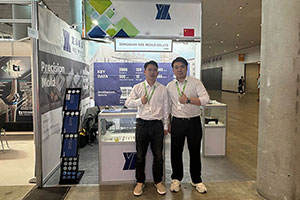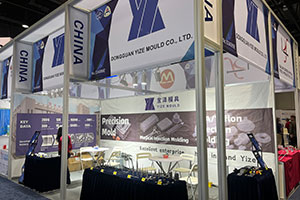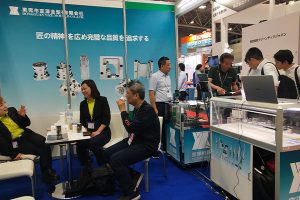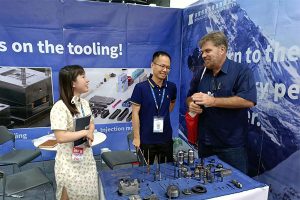Analysis of the Customization Cycle of Tungsten Carbide Dies
In the thriving modern manufacturing industry, molds serve as crucial tools for production. Especially in precision manufacturing fields such as electronics and automotive parts, the quality and precision of molds […]
In the thriving modern manufacturing industry, molds serve as crucial tools for production. Especially in precision manufacturing fields such as electronics and automotive parts, the quality and precision of molds directly determine the quality and production efficiency of products. Tungsten carbide dies, with their excellent characteristics of high hardness, high wear resistance, and high corrosion resistance, have become the preferred choice in many industries. However, the customization of tungsten carbide dies is no simple task. It involves multiple complex processes including design, material selection, machining, and debugging, each of which requires a significant investment of time and effort. This article adopts a general-to-specific structure, first providing an overall description of the customization process of tungsten carbide dies, then conducting a detailed analysis of the factors influencing the customization cycle, and finally proposing effective measures to shorten the cycle, offering comprehensive references for relevant enterprises and individuals.
I. The Basic Process of Customizing Tungsten Carbide Dies
The customization of tungsten carbide dies is a systematic and orderly process, which can be roughly divided into several stages: requirement analysis, design, material selection, machining, debugging, acceptance, and delivery.
당사의 공장 사업: 초경 부품, 금형 부품, 의료용 사출 금형, 정밀 사출 금형, 테플론 PFA 사출 성형, PFA 튜브 피팅. 이메일: [email protected],whatsapp:+8613302615729.
Requirement analysis is the cornerstone of die customization. Before customizing a tungsten carbide die, a comprehensive analysis of the product is necessary. This includes clarifying the product’s shape, size, material, precision requirements, as well as production requirements such as production batch and production cycle, providing an accurate basis for subsequent work.
The design stage is of paramount importance. Based on the results of requirement analysis, die design work is carried out, covering aspects such as structural design, process design, and material selection. During the design process, full consideration must be given to product characteristics, production requirements, and factors such as the durability and maintainability of the die.
Material selection directly affects the performance of the die. Appropriate tungsten carbide materials should be selected according to design requirements and product characteristics. Factors such as the hardness, wear resistance, and corrosion resistance of the tungsten carbide material will impact the performance and service life of the die.
Machining is the core process of customization. The machining process includes multiple steps such as rough machining, finish machining, and heat treatment. The machining accuracy and quality directly determine the final performance and service life of the die.
Debugging ensures that the die meets standards. After machining is completed, the die needs to be debugged, including steps such as installation, trial molding, and adjustment. Through debugging, it is ensured that the die meets the production requirements of the product.
Acceptance and delivery are the final steps of customization. After the die passes debugging, acceptance work is carried out, covering aspects such as dimension inspection, precision inspection, and functional inspection. Once the die passes acceptance, it can be delivered to the customer.
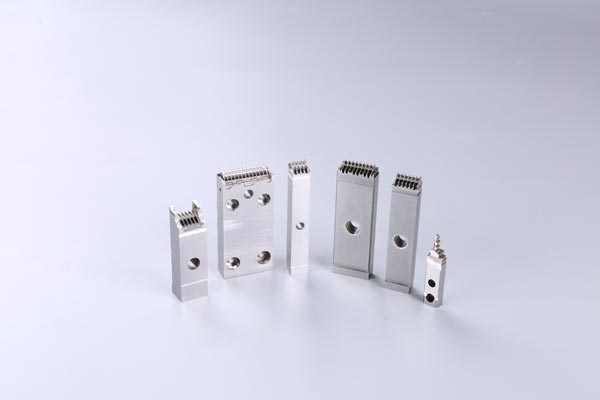
II. Factors Influencing the Customization Cycle of Tungsten Carbide Dies
The customization cycle of tungsten carbide dies is influenced by multiple factors. The following is an analysis of the main factors.
The complexity of the product is an important influencing factor. The more complex the product is, the greater the difficulty in die design and machining will be, and the longer the required time will be, thus extending the customization cycle.
Material selection also plays a crucial role. Different tungsten carbide materials have varying machining difficulties and performances. High-performance tungsten carbide materials can improve the performance and service life of the die, but their increased machining difficulty will lead to a longer customization cycle.
The accuracy and efficiency of machining equipment have a significant impact on the customization cycle. High-precision machining equipment can improve the machining accuracy and quality of the die, but the machining time may increase. Meanwhile, the maintenance and usage of the equipment will also affect the machining efficiency.
The complexity of the machining process is equally critical. Different products require different machining processes. Complex machining processes require more time and experience to complete, thus extending the customization cycle.
The order quantity and delivery time also have a certain impact. The larger the order quantity is, the longer the die manufacturing cycle may be. If the customer has strict requirements for the delivery time, the manufacturer needs to increase investment to shorten the customization cycle.
Unexpected situations are also uncontrollable factors. During the customization process, unexpected situations such as equipment failures and material supply problems may occur, which could lead to an extension of the customization cycle.
III. Measures to Shorten the Customization Cycle of Tungsten Carbide Dies
In response to the above-mentioned influencing factors, the following measures can be taken to shorten the customization cycle of tungsten carbide dies.
Optimizing product design is the primary measure. By optimizing product design, the complexity of the product can be reduced, and the difficulty in die design and machining can be simplified, thus shortening the customization cycle.
Selecting appropriate materials is crucial. According to product characteristics and production requirements, appropriate tungsten carbide materials should be selected to avoid choosing materials that are overly complex or difficult to machine.
Improving the accuracy and efficiency of machining equipment is key. High-precision machining equipment and advanced machining technologies should be adopted to improve the machining accuracy and quality of the die while reducing the machining time.
Simplifying the machining process can effectively shorten the cycle. By optimizing the machining process, the difficulty and complexity of machining can be reduced, and the time required for customization can be shortened.
Strengthening equipment maintenance and upkeep is indispensable. Regular maintenance and upkeep of machining equipment should be carried out to ensure its normal operation and high-efficiency work, avoiding delays in the customization cycle due to equipment problems.
Reasonably arranging production plans can improve efficiency. According to the order quantity and delivery time, production plans should be reasonably arranged to ensure the timely delivery of dies.
Establishing contingency plans can deal with unexpected situations. Contingency plans should be established to ensure a timely response and effective handling of possible unexpected situations, thereby minimizing their impact on the customization cycle.
IV. 결론
The customization cycle of tungsten carbide dies is influenced by various factors, including the complexity of the product, material selection, the accuracy and efficiency of machining equipment, the complexity of the machining process, order quantity and delivery time, and unexpected situations. To shorten the customization cycle, measures such as optimizing product design, selecting appropriate materials, improving the accuracy and efficiency of machining equipment, simplifying the machining process, strengthening equipment maintenance and upkeep, reasonably arranging production plans, and establishing contingency plans can be taken. By implementing these measures, the customization cycle of tungsten carbide dies can be effectively shortened, production efficiency can be improved, and customer satisfaction can be enhanced.
관련 게시물
- Analysis of the Application Characteristics of Tungsten Carbide Dies in Electronic Product Manufacturing
- What Are the Key Points for Cleaning and Maintaining Tungsten Carbide Dies?
- How to Prevent Corrosion of Tungsten Carbide Dies
- Comprehensive Analysis of Safety Operation Procedures in Tungsten Carbide Die Processing


